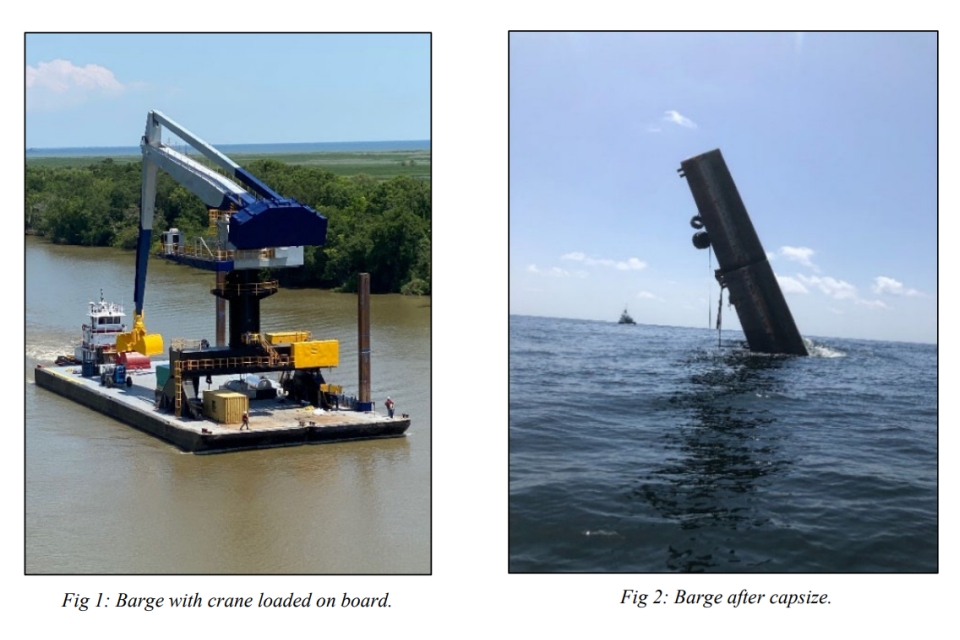A recent marine casualty resulting in the total loss of a crane barge, estimated at over USD 6 million, is a stark warning of the risks involved with failing to adhere to load line regulations. That is why the US Coast Guard (USCG) has issued a Safety Alert on the matter.
The incident occurred approximately 18 miles offshore of Louisiana in the Gulf of Mexico while the crane barge was being towed in calm weather conditions. The barge was uncertificated without a load line and the operator did not request a Single Voyage Load Line (SVLL) Exemption from any Coast Guard unit before transiting beyond the Boundary Line.
The Boundary Line is stipulated in 46 CFR Part 7, and non-load line vessels operating outside the Boundary Line are subject to penalties and fines stipulated in 46 USC 5116, see the USCG website for more information on the load line regulations.
Also read: USCG suspends search for capsized Seacor Power’s remaining crew
Modifications endanger seaworthiness
Over the course of the investigation, the Coast Guard discovered major modifications to the barge arrangement and other conditions, which compromised its seaworthiness. This would have precluded issuance of a SVLL Exemption until corrected. Additionally, prior to capsizing, the vessel made multiple voyages outside the Boundary Line without a load line, violating U.S. statutory requirements and placing the vessel and crew at risk.
Also read: Unauthorised modifications bring about capsizing of Nicola Faith
As a reminder, whether inspected or not, most commercial vessels 79 feet and longer are required to have a load line when operating outside the Boundary Line. The Coast Guard strongly recommends that vessel owners and operators (and other relevant stakeholders):
- Review vessel requirements for load lines as specified in 46 Code of Federal Regulations (CFR) Subchapter E parts 41 through 47, and further explained on the Coast Guard’s Load Line website and Load Line Policy Notes.
- Engage early with local Coast Guard when considering submission for a SVLL exemption. This process is critical for non-load lined vessels to ensure the seaworthiness of the vessel (i.e., condition of the hull, integrity of closures and satisfactory stability) for the duration of the intended voyage.
Also read: Dutch Safety Board: Trawlers with nets on one side at risk of capsizing








